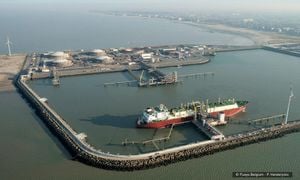The study conducted on the health of marine mussels (Perumytilus purpuratus) along the contaminated sites of the Humboldt Current System highlights the adverse impacts of multiple environmental stressors. Researchers have found significant associations between the mussels’ health and various factors including metal pollution, the presence of parasites and pathogens, as well as abiotic variables like salinity and pH levels.
Marine organisms, particularly filter-feeding bivalves like mussels, are increasingly exposed to complex and combined stressors stemming from human activities. Unlike traditional studies focusing on single factors, this research investigates the synergistic effects of multiple stressors to provide clearer insights on the real-world ecological challenges faced by these organisms.
Sampling was conducted across various sites, particularly in San Jorge Bay—the epicenter of industrial and mining activities. Suspended sediments and oceanographic conditions led to heightened cadmium and copper concentrations, creating burdens for local wildlife. The mussels were subjected to detailed biological assessments to gauge their overall health, immunity levels, and susceptibility to infections.
The results revealed concerning trends, indicating the prevalence of parasites and pathogens was highest among mussels from sites with elevated pollutant levels. These findings were accompanied by alarming tissue lesions, which correlated strongly with increased salinity and pH conditions present at the collection sites.
Notably, the authors state, "Findings emphasise the synergistic effects of chemical and abiotic factors, underscoring the importance of incorporating multiple factors interactions..." This statement emphasizes the need for broadening the scope of ecological health assessments, taking multiple interactions and their cumulative effects on marine life more seriously.
Further analysis demonstrated the involvement of parasites and pathogens, leading to enhanced haemocytic infiltration—an immune response indicating potential health deterioration. Mussels from heavily contaminated areas displayed significantly lower condition indices, underscoring the pressing health concerns for these marine organisms.
To conclude, this comprehensive study not only provides valuable insights on how combined factors signify threats to marine ecosystems, particularly highlighting the scenario faced by Perumytilus purpuratus, but also calls for enhanced monitoring practices. Such approaches are imperative for advancing conservation efforts and informing effective policies to combat global challenges like aquatic pollution.



